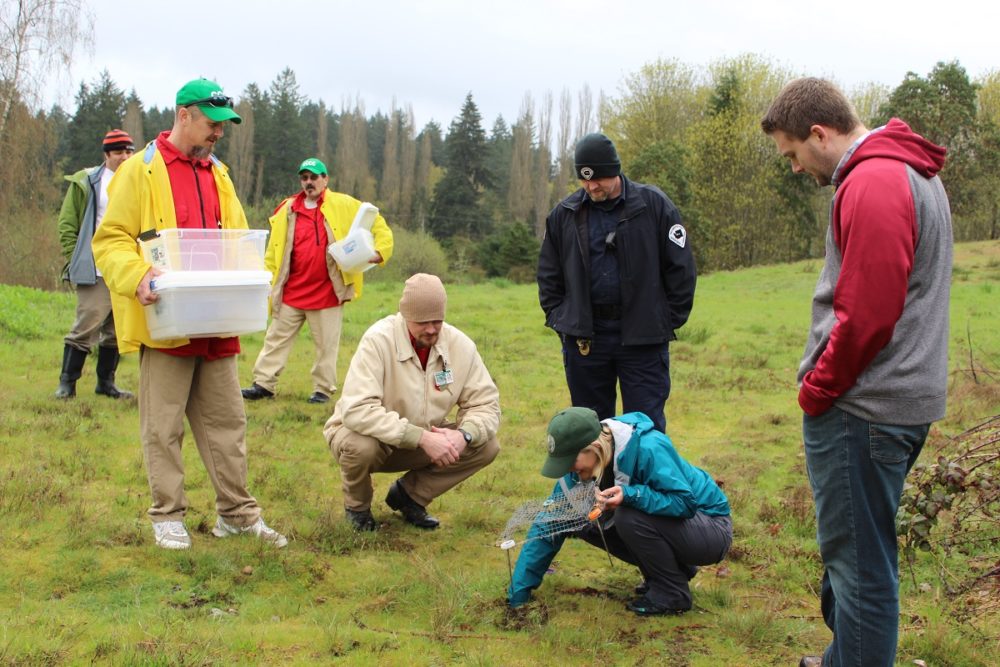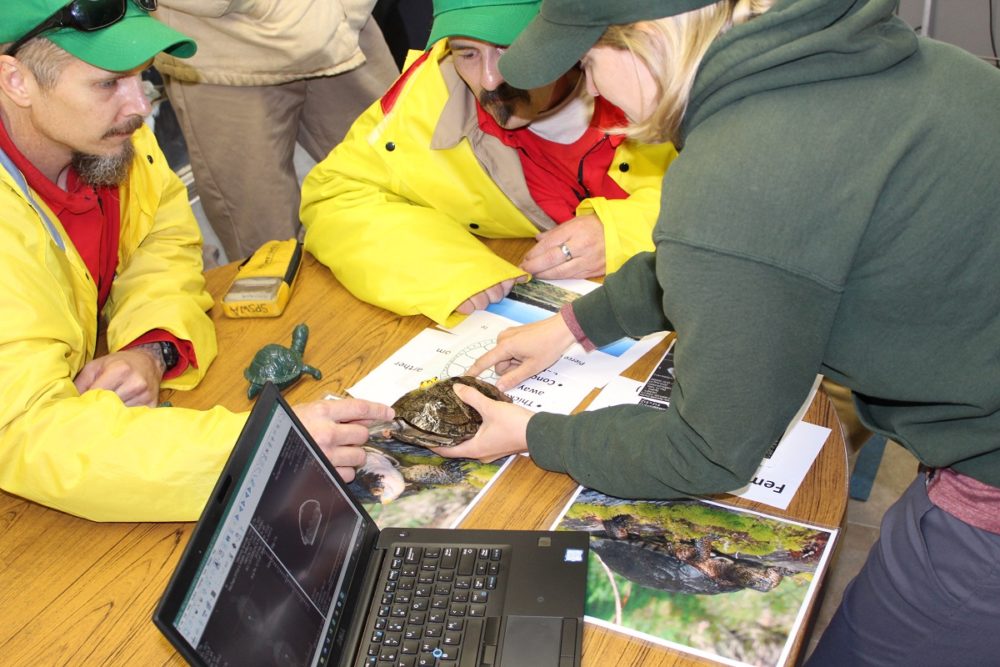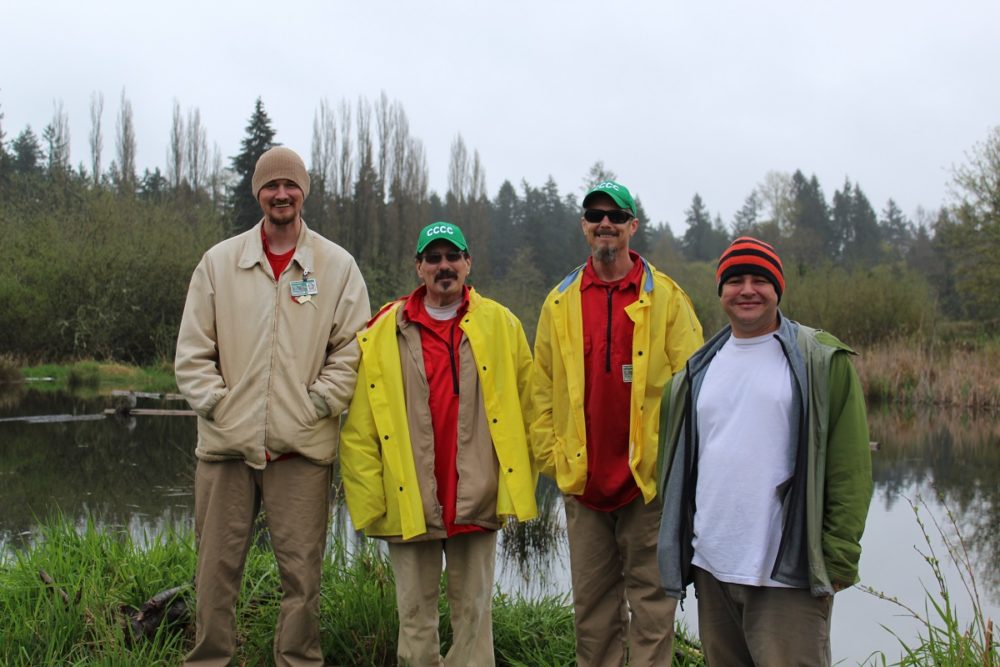Unless otherwise noted, text and photos by Bill Anglemyer, Evergreen student and former Turtle Technician.

With the technicians responsible for their rehabilitation, on April 10th, ten turtles made their way back to the ponds at the South Puget Sound Wildlife Area. Three incarcerated Biological Technicians working for The Sustainability in Prisons Project (SPP) had spent the last five months caring for the turtles and monitoring their progress. The turtles had been healing after being treated for the mysterious shell disease that has been afflicting their population.

The turtles are western pond turtles, a state-listed endangered species. The historic population had been devastated by human harvesting. Their numbers were lowered additionally by habitat destruction and an influx of invasive species. Twenty-five years ago, the population of western pond turtles in Washington State was estimated to be only around a hundred and fifty. Efforts were taken to protect and enhance their numbers. These efforts have been successful. The current population is estimated at eight hundred.



Tragically, the shell disease appeared in the last decade, and it is seriously impacting western pond turtles. While Washington State Fish and Wildlife biologists and veterinarians attempt to find the cause of shell disease, they are trying different tactics in treating the turtles that are most afflicted. After the treatments, which involve removing diseased sections of the turtles’ shells, the turtles need a place to heal. The technicians at Cedar Creek make sure that the turtles are well-fed and have clean habitats. Additionally, the technicians keep detailed records of the healing progress of the turtles’ shells. Lots of effort goes into keeping them as stress free as possible. The rehabilitation area is kept quiet because loud noises and other external stimuli cause stress in the wild turtles, which hampers their ability to heal.

Releasing the turtles back into the wild was a fairly simple and fanfare-free procedure. The technicians, SPP coordinator, SPP liaison, corrections officer, Fish and Wildlife biologist, and myself walked the strategically placed wooden planks that grant access to the edge of the pond. The plastic shoebox containers that were used to transport the turtles were opened, and the turtles taken out and gently placed in the water. Most of the turtles looked around for a second, as if to gain their bearing, and then swam off disappearing into the pond. Although the turtles need the treatment, they are wild critters, and they don’t like to be in a captive environment; they take to the murky pond like a prisoner to freedom.





It was a great experience seeing the turtles swim off into the pond. It was great to talk to the technicians about their experiences caring for the turtles. To hear the technicians talk about their plans for the future was inspiring. This is because I was a turtle technician at Cedar Creek for three years. I was caring for turtles inside the prison only a short year ago. The current technicians seemed to be inspired by my presence too. We talked about education—I’m currently in college. I was elated to hear that each one of the technicians was seriously considering furthering their education once released. I hope to be invited to future releases and to meet with new technicians.

